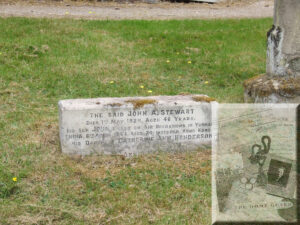Countries as First Names
A while ago I wrote about towns that parents gave their children as first names. I also wrote about alcoholic drinks used for the same purpose. It was while looking for the birth of a Riach family member that I came across a name that brought country names to my attention.
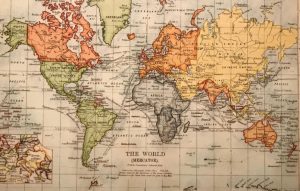
World map source unknown
With this new blog already forming in my mind, I set off on a simple search of FMB (FreeBMD) just using Sept 1837 to 1945 as my date range I started to enter country names in the first name search box – here are a few of my results.
England – over 60 results with the registrations all being south of Knaresborough. A few Bradford and Dewsbury families used England as a first name but the majority were registered in Bridgewater, Axbridge and Warrington. With a few registered in Glandford B and N. Aylesford.
Scotland – If England brought results I wondered if Scotland would show results. FreeBMD would not show that for births but would a few deaths show up for those people wandering down across the border. No, no deaths or marriages were shown but when looking at ScotlandsPeople results did show. The OPR’s (Old Parish Registers) show 45 births, 2 deaths, 6 marriages and 3 baptisms. The Statutory Registers from 1855 the present show 702 births, 558 deaths, 384 marriages and 26 divorces. While church records over 55 results. The census over the years shows again over 55 cases of Scotland used as a first or middle name.
Wales – Wales has also been used as a first name and registered in places such as Wakefield, Pontefract, Dewsbury, Marylebone, Shoreditch, Durham. The first registration being in 1838 and the last in 1900.
Ireland – Ireland also has been used as a first name for both male and female. The first entry is in 1840 when Ireland Sophia Du Chateau is registered in Kensington. In 1841 Ireland William Hewes Graham is registered in Stow. The year 1900 sees the registration of Ireland Stanley Brian De Courcy in Doncaster. The last entries using the 1837 – 1945 criteria on FMD are registered in 1937 in Stepney and Camberwell. Now to go further afield
Africa – There were 9 children registered with the name Africa between 1848 and 1910 and there seems to be no duplication of registration districts.
Belgium – First used as a first or middle name in 1877. You then see a gap until 1914 when it is probably expected. The name is then used widely until the last registered in 1920.
France – Surprisingly enough, and I was very surprised, there was no registration of the name France as the first name in FreeBMD – yet! But and this is a big BUT I found my search criteria was way too large, 1937 to 1945 is not large for most names but France seems to have broken the limit of shown entries which is 3000. I re-jigged the search to 1900 -1945 but again I broke the system. Another re-jigging and now 1914-1948 now there are only 14000 entries still over 11000 too many to view. When the West Riding of Yorkshire is used as an area the results show a large number of entries is mainly due to FRANCES taking over the search. Now to play with the options – using ‘Exact match on first names’, going back to my original search Sept 1837 – Dec 1945 and returning to Counties ALL – BINGO! France is used widely from the beginning of registration but I was shocked to find that during The Great War there seem to be no more or fewer entries than is the norm.
Holland – Holland, however, does have a great number of entries. These large numbers could be mainly since Holland is also a surname and being given to their children to remember a maiden surname down the family line.
Denmark – This country used as a first or middle name only has 3 registrations in the criteria used for this purpose. Denmark was first registered in 1878 in Neath, then two years later on the Isle of Wight and then lastly in 1894 in Highworth. On all three occasions, Denmark has been followed by one or two middle names.
Spain – This country only seems, according to the FMD entries, registered one time – in 1843 in Thanet. So it seems that Spain Lilleford Miller was the only person to have Spain as a name.
Portugal – Portugal, also seems to be lacking registrations.
Italy – Italy has been registered 3 times from 1890 to 1913 with all the entries being in the London area and to Italian families.
Germany – continuing around Europe, Germany has been registered 5 times between 1842 and 1872 with no duplication of registration district.
Switzerland – no registrations.
Poland – There were 3 registrations for the first name Poland between 1860 and 1921 all being in the south of England.
Russia – There was only one entry, Russian Freemantle was registered in S Stoneham in 1903.
America – America on its own sees four entries between 1870 and 1885 and one example of Americas being registered in Chelsea in 1843. In 1884 America Rushbrook De la Coze was registered in Midhurst. The following year America Maria J Casadia was registered in Holborn.
Canada – Another example of a unique name. Canada Katie E Wardle was registered in Shipston in the December Quarter of 1897.
Brazil – The year 1887 sees the first entry of Brazil being used but Brazillia was used in 1845. You would think that Brazil would be the masculine name while Brazillia was the female version. That is not the case as in 1867 Hull Brazillai Stephen Cock was registered. You could also think that this name was used by sailors who had visited Brazil. This presumption may not be the case as many of the registrations are for inland districts.
Argentina – While Patagonia has no entries Argentina has 11 registrations between 1849 and 1900 from places as far a wide as Peterborough, Bradford, Devises, Wirral, St Pancras and London. Out of the 11 registrations, only 4 have a British surname. The majority of the remainder seem to be Italian in origin.
Australia – Again a single entry first name. Australia George A Tyler was registered in Spalding in 1870.
Tasmania – Tasmania however, has three entries all of which seem to be female born between 1855 and 1893.
Zealand – This name has been registered 7 times and in all instances except one has been the only name – Zealandia Ross Burt is the only multi-name and the only example of Zealandia.
Java – Java has also been used as a first name with a first registration taking place in Bradford in 1862.
Japan – There are no entries.
China – However, China sees three registrations for both male and female between 1842 and 1904.
Siberia – Now this one did surprise me with three entries from 1838 to 1896.
India – India was first registered in Spilsbury in 1842 but there were entries for Indian(n) before and after. Indian(n)a does take up the majority of the search results.
Arabia – Finds one entry for Arabia Maria Louisa Woolsey being registered in Erpingham in 1838.
Burma – First registered in Wellingborough in 1859 and given to Burma Selema Flawn. The main results for Burma as criteria are Burman and Burmah.
Iceland – Sees three entries in a 42 year period.
Norway, Sweden and Finland see no entries.
Uist – Uist an island off Scotland has 6 entries but all are between 1948 and 1983 and all are registered south of Nottingham.
Going out on a limb with one last search:
Greenland – Six registrations taking place between 1877 and 1919
That ends my journey around the world in names. But doesn’t it make you wonder what was the reasoning behind the parents choice of name(s) for their children? During The Great War, you can understand Belgium being used. There also was a speight of Belgian town names as babies names during that time. But countries such as Java and Burma makes you wonder what was the connection, as I am sure that many working men and women may never have heard of these places, never mind have a connection to them.
Why people chose such names for their children could remain a mystery unless these people are in your family tree.
Like this:
Like Loading...
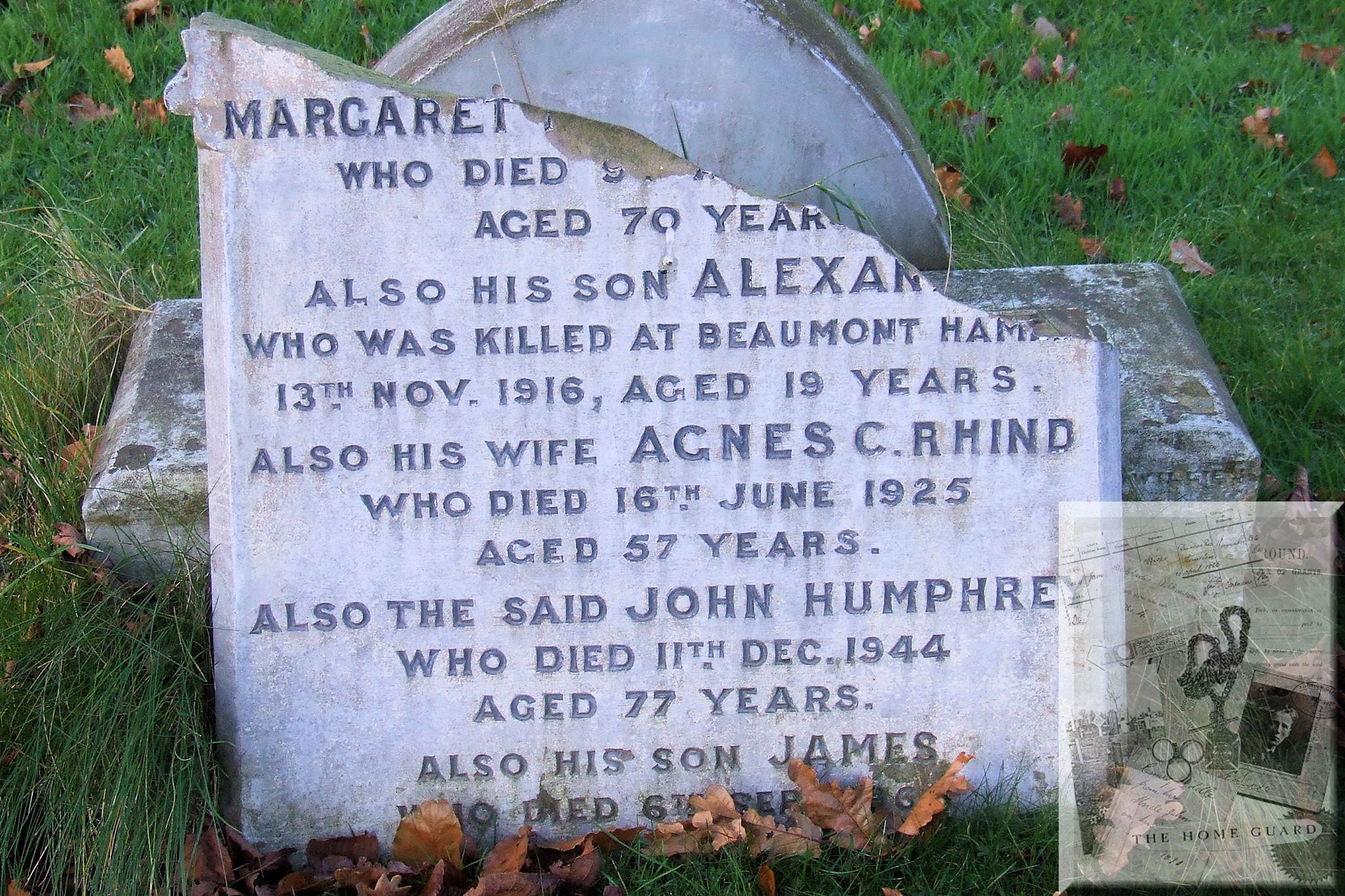
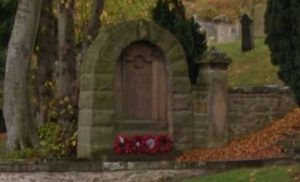
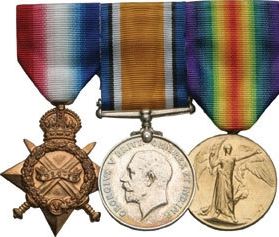 The Service Record for Adam has not survived but other documents can give a great deal of information. Adam L Chivas (Chevas) has two Medal Cards – one tells he entered France on the 10th of May 1915, thus marking him eligible for the 1915 Star and that he was K in A. The other using Chivas as the surname is less informative but gives his entitlement to the British and Victory Medals.
The Service Record for Adam has not survived but other documents can give a great deal of information. Adam L Chivas (Chevas) has two Medal Cards – one tells he entered France on the 10th of May 1915, thus marking him eligible for the 1915 Star and that he was K in A. The other using Chivas as the surname is less informative but gives his entitlement to the British and Victory Medals.
